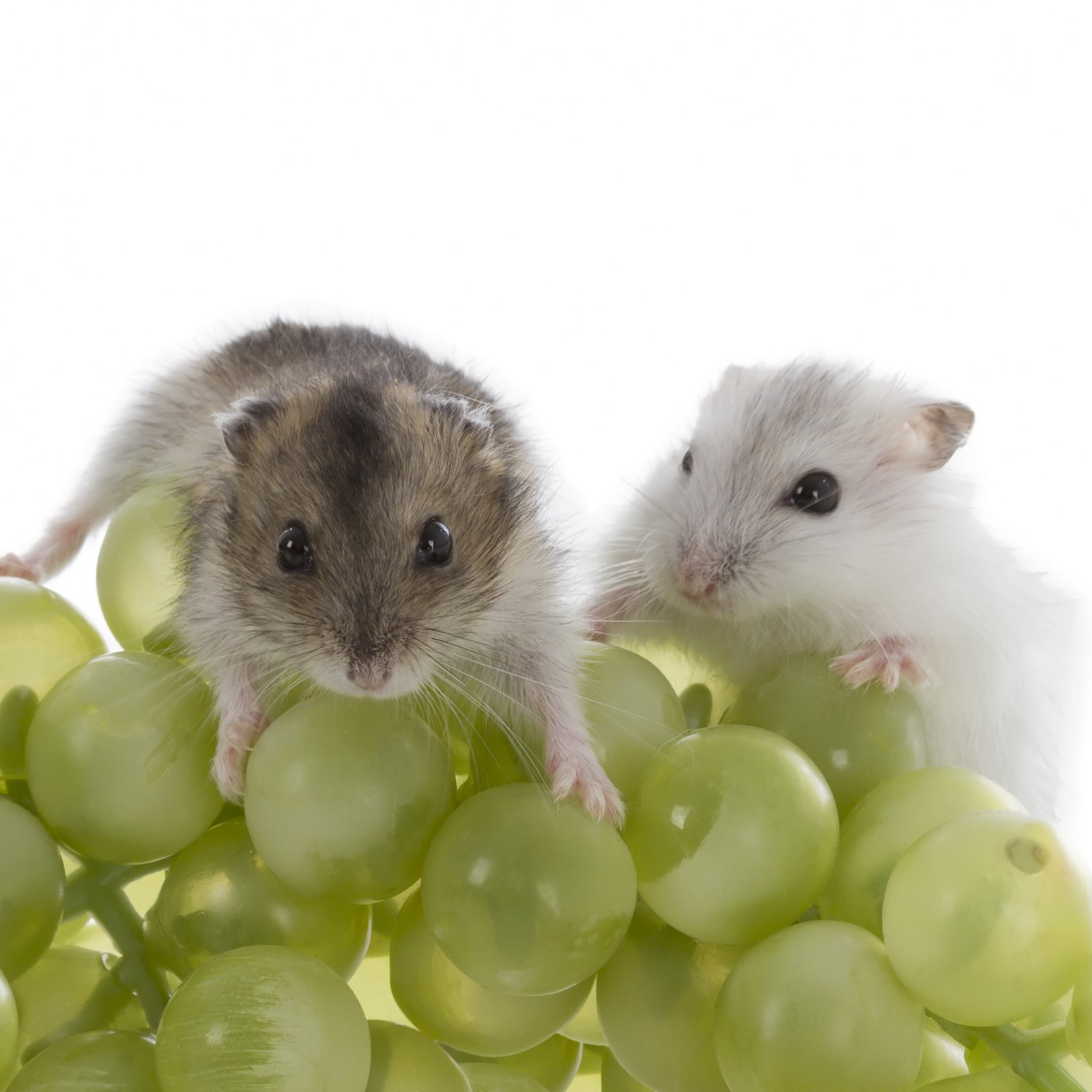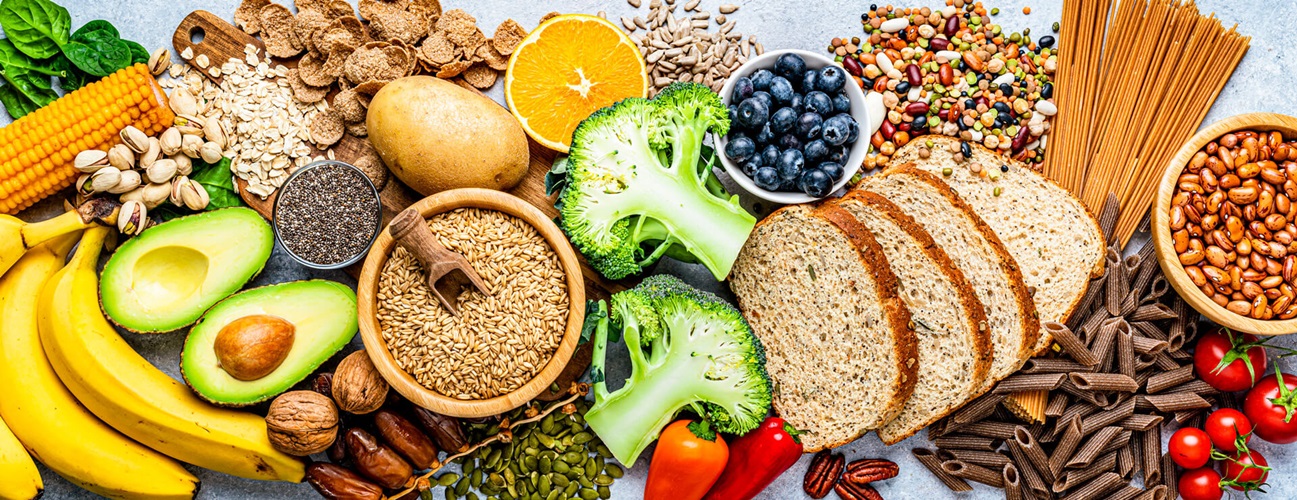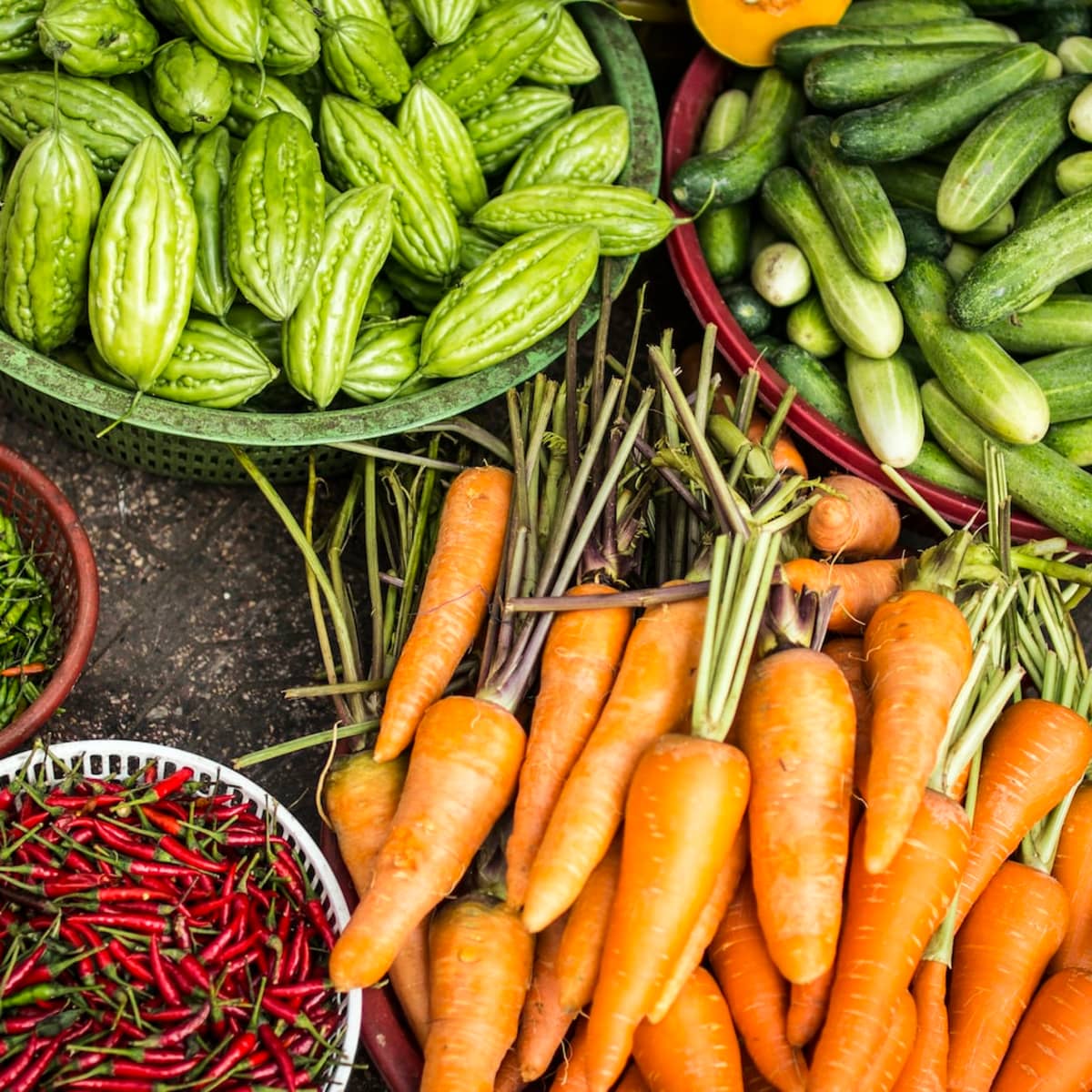Home>Gardening News and Trends>Latest News>What Vegetables Can You Eat On Optavia


Latest News
What Vegetables Can You Eat On Optavia
Modified: January 22, 2024
Discover the latest news on Optavia and find out which vegetables you can eat on this popular diet plan. Start your journey towards a healthier lifestyle today!
(Many of the links in this article redirect to a specific reviewed product. Your purchase of these products through affiliate links helps to generate commission for Chicagolandgardening.com, at no extra cost. Learn more)
Table of Contents
Introduction
The Optavia diet has gained popularity in recent years as a weight loss program that focuses on portion control and healthy eating habits. It is designed to help individuals achieve sustainable weight loss and improve overall health. One of the key components of the Optavia diet is incorporating a variety of vegetables into your meals.
Vegetables are an essential part of a balanced diet, providing vital nutrients, vitamins, and minerals that contribute to overall wellness. However, not all vegetables are created equal, and some may not align with the Optavia diet guidelines.
In this article, we will explore the different types of vegetables that are approved for consumption on the Optavia diet. By understanding the options available, you can create flavorful and satisfying meals while staying on track with your weight loss goals.
It’s important to note that while vegetables are a significant part of the Optavia diet, they are not the sole component. Optavia also incorporates meal replacement products and encourages regular exercise and consistent water intake.
Now, let’s dive into the world of Optavia-approved vegetables and discover the delicious options that await!
Understanding the Optavia Diet
The Optavia diet is a structured weight loss program designed to assist individuals in achieving their health and wellness goals. It utilizes portion control, balanced nutrition, and regular contact with a certified Optavia coach to support long-term success.
The foundation of the Optavia diet consists of consuming six small meals throughout the day, including a combination of Optavia-approved products and lean and green meals. These lean and green meals are where the incorporation of vegetables becomes crucial.
By adhering to the Optavia diet plan, individuals are encouraged to develop healthier eating habits and make mindful choices when it comes to their food intake. This includes selecting nutrient-dense foods that support weight loss and overall well-being.
One of the main principles of the Optavia diet is to consume a moderate amount of carbohydrates, primarily in the form of vegetables. This approach helps to control blood sugar levels, promote fat burning, and maintain a sense of fullness and satiety.
Additionally, the Optavia diet emphasizes the importance of regular physical activity and staying well-hydrated. These components work in conjunction with the nutrition plan to optimize weight loss results and improve overall fitness.
It’s important to note that the Optavia diet is not a short-term solution but rather a lifestyle change aiming for sustainable weight loss. It promotes the development of healthy habits and a positive relationship with food, setting individuals up for long-term success in maintaining their weight and overall well-being.
Now that we have a better understanding of the Optavia diet, let’s explore the types of vegetables that are approved for consumption within this program.
Overview of Optavia-Approved Vegetables
When following the Optavia diet, it’s important to incorporate a variety of vegetables into your meals to ensure you are getting essential nutrients while promoting weight loss. Optavia-approved vegetables are carefully selected for their nutrient density and lower carbohydrate content.
These vegetables are categorized into different groups based on their starch and carbohydrate levels. Understanding these categories will help you make informed choices when planning your meals on the Optavia diet. Let’s take a closer look at the various groups of Optavia-approved vegetables.
1. Low-Starch Vegetables: Additions such as asparagus, green beans, and mushrooms fall under this category. These vegetables are relatively low in carbohydrates and can be enjoyed in generous portions.
2. Cruciferous Vegetables: Broccoli, cauliflower, and cabbage are some examples of cruciferous vegetables. They are not only low in carbs but also packed with fiber and antioxidants, making them an excellent choice for Optavia meals.
3. Non-Starchy Green Vegetables: Leafy greens like spinach, lettuce, and kale belong to this group. They are rich in vitamins and minerals while being low in carbs, making them an ideal addition to your Optavia meals.
4. Root Vegetables: Vegetables like carrots and beets fall into this category. While they are higher in carbs compared to other Optavia-approved options, they can still be enjoyed in moderation as part of a balanced meal.
5. Nightshade Vegetables: Bell peppers, eggplant, and tomatoes are part of the nightshade vegetable group. They are lower in carbohydrates and provide a burst of flavor and color to your Optavia dishes.
6. Onions and Garlic: Onions and garlic are versatile ingredients that add depth and flavor to meals. They are considered Optavia-approved vegetables when used in moderation.
By incorporating a variety of Optavia-approved vegetables from these categories into your meals, you can create flavorful and satisfying dishes while staying on track with your weight loss goals.
Now that we’ve covered the different groups of Optavia-approved vegetables let’s take a closer look at some specific examples within each category to help you plan your meals more effectively.
Low-Starch Vegetables
Low-starch vegetables are an essential part of the Optavia diet. These vegetables are generally lower in calories and carbohydrates, making them an excellent choice for individuals looking to manage their weight and stabilize blood sugar levels. Here are some examples of low-starch vegetables that are approved on the Optavia diet:
- Asparagus: Asparagus is a flavorful and versatile vegetable that can be enjoyed in a variety of ways. It is low in calories, high in fiber, and rich in vitamins and minerals.
- Green Beans: Green beans are a popular choice among Optavia dieters. They are low in carbs, high in fiber, and a good source of vitamins A, C, and K.
- Mushrooms: Mushrooms are a tasty addition to any Optavia meal. They are low in calories, carbs, and fat, and offer a good amount of protein and fiber.
- Zucchini: Zucchini is a versatile vegetable that can be used in various recipes. It is low in carbs, high in fiber, and provides a good amount of vitamins A and C.
- Celery: Celery is a crunchy and refreshing vegetable that is low in calories and carbs. It is also a great source of antioxidants and dietary fiber.
These low-starch vegetables can be enjoyed in generous portions on the Optavia diet. They provide essential nutrients and contribute to feelings of fullness and satisfaction. Whether you sauté them, steam them, or include them in salads or stir-fries, these vegetables can add flavor, texture, and nutritional value to your Optavia meals.
Remember to include a variety of low-starch vegetables in your daily meal plan to ensure a well-rounded intake of nutrients. By incorporating these vegetables into your Optavia meals, you can enjoy a wide range of flavors while maintaining a healthy eating routine.
Now that we’ve explored low-starch vegetables, let’s move on to the next group of Optavia-approved vegetables: Cruciferous vegetables.
Cruciferous Vegetables
Cruciferous vegetables are an excellent addition to your Optavia meals. These vegetables belong to the Brassicaceae family and are known for their unique flavors and health benefits. Here are some examples of Optavia-approved cruciferous vegetables:
- Broccoli: Broccoli is a nutrient powerhouse, rich in vitamins C, K, and folate. It is low in calories and packed with fiber, making it a great choice for Optavia meals.
- Cauliflower: Cauliflower is a versatile vegetable that can be used as a substitute for starchier ingredients. It is low in carbs and calories and offers a good amount of fiber and important vitamins like C and K.
- Cabbage: Cabbage is a cruciferous vegetable that comes in different varieties, such as green and red cabbage. It is low in calories, high in fiber, and contains beneficial compounds that may promote health.
- Brussels Sprouts: Brussels sprouts are small, nutrient-dense vegetables that are rich in vitamins C and K. They are low in calories and carbohydrates while providing a good amount of fiber and antioxidants.
- Kale: Kale is a leafy green vegetable that is hailed as a nutritional powerhouse. It is packed with vitamins A, C, and K, as well as antioxidants and fiber. Kale is a versatile ingredient that can be used in salads, smoothies, or sautéed as a side dish.
Cruciferous vegetables are not only low in calories and carbohydrates, but they also boast a wide array of nutrients and offer numerous health benefits. They are rich in antioxidants, anti-inflammatory compounds, and fiber, which may contribute to improved digestive health and overall well-being.
These Optavia-approved cruciferous vegetables can be included in your meals in various ways. You can roast them, stir-fry them, or even incorporate them into soups and stews. Their unique flavors and textures can add depth and nutritional value to your Optavia diet without compromising your weight loss goals.
Now that we’ve covered cruciferous vegetables let’s move on to the next group of Optavia-approved vegetables: Non-Starchy Green Vegetables.
Non-Starchy Green Vegetables
Non-starchy green vegetables are a staple in the Optavia diet. These vegetables are low in calories, carbohydrates, and fat, making them an excellent choice for weight management and overall health. Here are some Optavia-approved non-starchy green vegetables:
- Spinach: Spinach is a nutrient-rich leafy green vegetable that is packed with vitamins A, C, and K. It is also a good source of iron and antioxidants. Spinach can be enjoyed raw in salads or cooked in various dishes.
- Lettuce: Lettuce, such as romaine, iceberg, and leafy greens, is low in calories and a great source of dietary fiber. It adds crunch and freshness to salads and is a perfect base for wraps and sandwiches on the Optavia diet.
- Kale: Kale is another leafy green that is highly nutritious and versatile. It is rich in vitamins A, C, and K, and antioxidants. Kale can be enjoyed in salads, stir-fries, or even baked into kale chips for a healthy snack.
- Arugula: Arugula, with its peppery flavor, is a delicious addition to salads or can be used as a bed for roasted vegetables or grilled protein. It is low in calories and carbohydrates while providing essential nutrients like folate and vitamins A and C.
- Mixed Salad Greens: Mixed salad greens, often available in pre-packaged bags, offer a variety of leafy greens like baby spinach, arugula, and lettuce. They are convenient and provide a combination of flavors and textures.
Non-starchy green vegetables are a powerhouse of vitamins, minerals, and antioxidants. They are low in calories, helping to fill you up without adding excessive carbohydrates or fats to your meals.
These vegetables can be enjoyed in salads, as a side dish, or incorporated into recipes like stir-fries and soups. Their vibrant colors and refreshing flavors can bring a delightful aspect to your Optavia meals while ensuring you receive a wide range of nutrients.
Now that we’ve discussed non-starchy green vegetables, let’s move on to the next group: Root Vegetables.
Root Vegetables
Root vegetables, while slightly higher in carbohydrates compared to other Optavia-approved vegetables, can still be enjoyed in moderation on the Optavia diet. These vegetables provide essential nutrients, fiber, and a satisfying taste. Here are some Optavia-approved root vegetables:
- Carrots: Carrots are a vibrant and crunchy vegetable that is rich in beta-carotene, a precursor to vitamin A. They are low in fat and calories and can be enjoyed raw as a snack or cooked as a side dish.
- Beets: Beets are sweet and earthy root vegetables that are high in nutrients like folate, manganese, and potassium. They are also a good source of dietary fiber. Beets can be boiled, roasted, or grated into salads.
- Radishes: Radishes come in various colors and add a refreshing and crisp texture to salads and side dishes. They are low in calories and carbohydrates while providing a good amount of vitamin C and other essential nutrients.
- Turnips: Turnips have a slightly peppery flavor and are versatile in cooking. They are rich in vitamin C, fiber, and antioxidants. Turnips can be enjoyed roasted, mashed, or used in stews and soups.
- Parsnips: Parsnips resemble carrots but have a sweeter and nuttier flavor. They are a good source of fiber, vitamin C, and folate. Parsnips can be roasted, mashed, or added to soups and stews.
Root vegetables can add variety and natural sweetness to your Optavia meals. While they may have slightly higher carbohydrate content, their nutritional value and flavor make them a valuable addition to your diet. Moderation is key to ensure they fit within your daily carbohydrate limits.
Experiment with different cooking methods and recipes to enjoy the unique taste and texture of root vegetables. Whether roasted, boiled, or incorporated into stews and soups, these vegetables can add depth and richness to your Optavia meals.
Now that we’ve explored root vegetables, let’s move on to the next group: Nightshade Vegetables.
Nightshade Vegetables
Nightshade vegetables, despite their name, are a group of vegetables that offer various health benefits and flavors. They get their name from the family of plants they belong to, called Solanaceae. Many nightshade vegetables are approved on the Optavia diet. Here are some examples:
- Bell Peppers: Bell peppers come in different colors and are rich in vitamin C and antioxidants. They add a vibrant, sweet, and crunchy element to salads, stir-fries, or roasted dishes.
- Eggplant: Eggplant is a versatile vegetable that has a rich, creamy texture. It is low in calories and carbohydrates, making it a great addition to Optavia meals. Eggplant can be grilled, roasted, or sautéed.
- Tomatoes: Tomatoes are a popular choice in many culinary dishes. They are low in calories and high in vitamins A and C. Tomatoes can be used in salads, sauces, or enjoyed raw as a refreshing snack.
- Tomatillos: Tomatillos are commonly used in Mexican cuisine. They have a tangy flavor and can be used in salsas, sauces, or roasted for a unique twist on Optavia meals.
- Chili Peppers: Chili peppers come in various heat levels and provide a spicy kick to dishes. They contain capsaicin, which has been linked to numerous health benefits, including boosting metabolism and reducing inflammation.
Nightshade vegetables offer a range of flavors and textures that can add excitement to your Optavia meals. They are low in calories and provide essential vitamins, minerals, and antioxidants that support overall health and well-being.
When including nightshade vegetables in your Optavia meals, be mindful of your tolerance to spicy foods and any specific sensitivities you may have. Enjoy these vegetables in moderation as part of a balanced diet.
Now that we’ve discussed nightshade vegetables, let’s explore another category: Onions and Garlic.
Onions and Garlic
Onions and garlic are aromatic vegetables that are widely used in various cuisines for their distinctive flavors. These flavorful ingredients are also approved on the Optavia diet, adding depth and taste to your meals. Here’s why you can include onions and garlic in your Optavia-approved vegetables:
Onions: Onions come in different varieties, including red, white, and yellow. They add a savory and slightly sweet flavor to dishes. Onions are low in calories and high in antioxidants. They provide a good amount of vitamin C, fiber, and other essential nutrients.
Garlic: Garlic has a pungent flavor and is used in many culinary traditions. It has been praised for its potential health benefits, including boosting the immune system and reducing the risk of certain diseases. Garlic is low in calories and carbs, making it a great addition to your Optavia meals.
Onions and garlic can be used as a base ingredient in sauces, soups, and stir-fries. They can be sautéed, roasted, or even added raw to salads for an extra burst of flavor.
When incorporating onions and garlic into your Optavia meals, it’s important to keep in mind portion sizes and personal preferences. They can be enjoyed in moderation to enhance the taste of your dishes and provide additional health benefits.
Now that we’ve explored onions and garlic, let’s take a look at some other Optavia-approved vegetables.
Other Optavia-Approved Vegetables
In addition to the specific groups of vegetables we’ve discussed, there are other Optavia-approved vegetables that offer a wide range of flavors and nutritional benefits. These vegetables can be incorporated into your Optavia meals to add variety and enhance your dining experience. Here are some examples:
- Cucumbers: Cucumbers are hydrating, refreshing, and low in calories. They can be enjoyed in salads, as a snack, or added to water for a refreshing infused beverage.
- Mushrooms: While we’ve covered mushrooms as part of the low-starch vegetable group, it’s worth mentioning that they can add unique flavors and textures to various dishes. Mushrooms are low in calories, fat-free, and a good source of vitamins and minerals.
- Cauliflower Rice: Although technically a form of cauliflower, cauliflower rice has gained popularity as a low-carb alternative to traditional rice. It can be used in stir-fries, as a base for bowls, or wherever you would typically use rice.
- Green Peas: Green peas are a starchy vegetable but can be enjoyed in moderation on the Optavia diet. They provide a good amount of fiber, protein, and vitamins A and C. Enjoy them as a side dish or add them to salads or stir-fries.
- Herbs and Spices: While not technically vegetables, herbs and spices play a crucial role in flavoring Optavia-approved dishes. Fresh herbs like basil, cilantro, and parsley, as well as spices like cumin, turmeric, and paprika, can elevate the taste profile of your meals.
These vegetables offer a variety of nutrients, flavors, and textures, allowing you to create delicious and satisfying Optavia meals. Including these vegetables in your diet can help you maintain a balanced and nutrient-rich eating plan.
Remember to be mindful of portion sizes and be creative in your meal preparations to ensure a well-rounded intake of Optavia-approved vegetables.
Now that we’ve explored the different types of Optavia-approved vegetables, it’s time to put your knowledge into practice and create flavorful and nutritious meals that align with your weight loss goals.
Conclusion
Incorporating a variety of vegetables into your meals is a key component of the Optavia diet. These Optavia-approved vegetables provide essential nutrients, fiber, and contribute to your overall health and wellness. By understanding the different categories of Optavia-approved vegetables, you can make informed choices and create delicious, satisfying meals.
From low-starch vegetables like asparagus and green beans to cruciferous vegetables like broccoli and cabbage, there is a wide range of options to choose from. Non-starchy green vegetables like spinach and kale add vibrant colors and important vitamins to your dishes, while root vegetables and nightshade vegetables provide unique flavors and nutritional benefits. Onions, garlic, and other Optavia-approved vegetables like cucumbers and mushrooms offer versatility and help enhance the taste of your meals.
When planning your Optavia meals, remember to incorporate a variety of vegetables from these categories. By doing so, you’ll ensure that you’re getting a range of nutrients while enjoying flavorful and satisfying meals.
It’s important to note that while vegetables are an essential part of the Optavia diet, they are not the only component. Optavia also emphasizes portion control, regular physical activity, and the incorporation of other Optavia-approved products to support your weight loss journey.
With the knowledge of Optavia-approved vegetables in hand, you can now create flavorful, nutritious, and enjoyable meals that align with your health and weight loss goals. Explore new recipes, experiment with different cooking methods, and remember to savor the flavors that come with incorporating these vegetables into your Optavia meals.
Start your journey to better health and nourishment by embracing the wide array of Optavia-approved vegetables available to you. Fuel your body with the goodness of vegetables and experience the positive impact it can have on your overall well-being.










